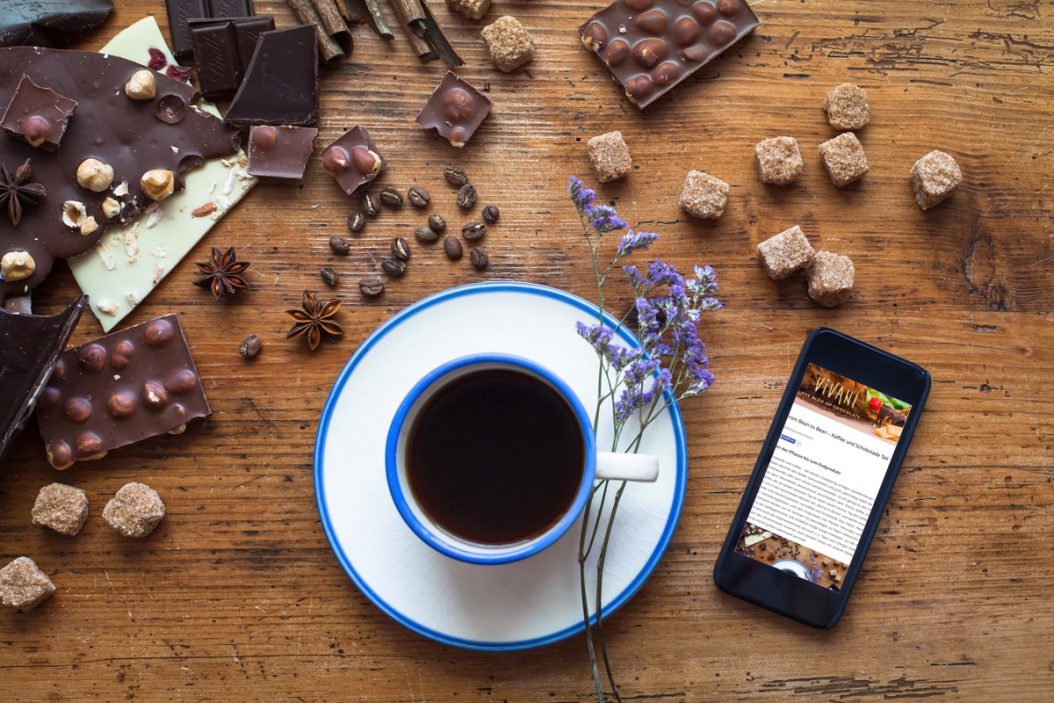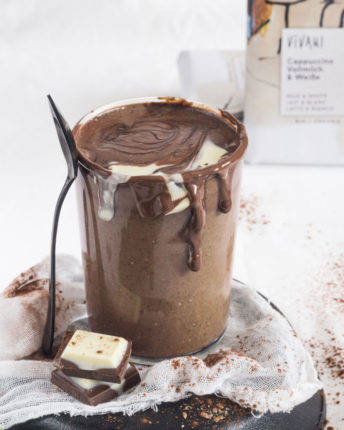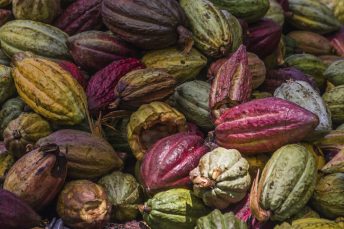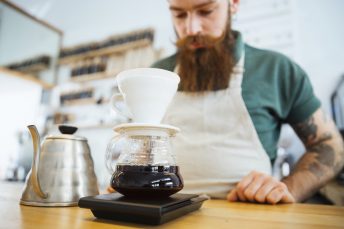Coffee & chocolate: from plant to finished product
From Bean to Bean – Part 1
Text:
Katharina Kuhlmann
Photography:
istoc anyaberkut, istock FlavioConceicaoFotos
17 December 2018

Chocolate and coffee – a combination that always sets the hearts of food lovers racing. There are many differences between the two luxury delectables – yet the miraculously flavoured dark brown foodstuffs have lots in common too. Reason enough for the VIVANI Chocolate Blog to dedicate a special month-long feature solely to coffee and chocolate.
Over the coming weeks, we will swing from “bean to bean” and take a look at the similarities and differences between coffee and chocolate, or cocoa. We are going to start today with the manufacturing process and the finished product. In the next article we will look at indulgent treats and the problems associated with mass-produced products; there will also be facts & figures, a short look at the history of coffee and, finally, some amusing anecdotes from the world of coffee.
Origin and production – coffee and chocolate, the non-identical twins
Last year, in our “From tree to bar” special – which described the origins of cocoa and chocolate, starting with the tree – we gave you a whole host of information about the cocoa tree. One of its little secrets: the tropical beauty is a true exotic diva when it comes to growing conditions. And the coffee plant coffea – which comes in countless subspecies, as both shrubs and trees – is exactly the same. The coffee plant is, however, a little less demanding, which is why it is grown in around 70 countries across the globe. Cocoa, on the other hand, can only be grown in less than 50 countries. Just as with cocoa, the majority of coffee beans comes from just a few species. Coffea Arabica and Coffea Canephora (the Robusta variety) are the coffee equivalent of the cocoa varieties known as Criollo and Forastero. Different varieties are combined to produce special flavours – with coffee, this takes place at the end of the production stage, in a so-called blending procedure. Cocoa is also blended; but here, the cocoa is blended in the tree itself, with the crossbred variety known as Trinitario.
There are similarities between the way coffee plants and cocoa trees are grown too. There are the problematic monocultures with their many truncated plants – more on that later. But you can also find certified sustainable methods with a natural mixed cultivation and shade plants. On the large plantations, coffee is harvested by machines. Higher quality coffees are harvested and sorted by hand and can be found on the farms run by small farmers’ co-operatives.
Just like when extracting cocoa beans, the aim of processing the coffee fruit is to remove the pulp and to treat the beans so they last longer. Unlike with cocoa, there are two different methods for coffee. Simply drying the beans and then shelling them consumes less energy but does not result in top-quality coffees. In order to achieve a fine coffee, you generally need to use wet processing: this process consumes vast amounts of water and, like with cocoa, sees the beans being fermented.
When it comes to roasting the coffee, roasters need a lot of finesse and experience, just as with cocoa. Many other factors also play a role in the process – from the variety to the quality and more. Unlike with cocoa, there is a really wide range of established roasting grades – from a light roast to strong, heavily roasted, dark beans (Italian roast). Between these two extremes, you can find Cinnamon, American, Viennese and French roasts.
What is in the beans?
In addition to their huge variety of flavours, which tend to develop during fermentation and roasting, coffee and cocoa beans also contain a range of other specific substances – substances that health experts have been speaking extremely highly of in recent years. The super-fruit cocoa contains the legendary theobromine, flavanoles, antioxidants, vitamins and dietary fibre, which can be good for the heart. Good reason for its veneration as a drink from the Gods by the Maya, as a medicinal product and tonic during the last centuries in Europe. And coffee can boast similar benefits. The “black stimulant” has also been prescribed by doctors of the past and has spurred on scores of patients thanks to the 800 or so substances that it contains, which include antioxidants, minerals and vitamins. The wonder drug: caffeine. Enjoyed in moderation, it acts like adrenaline; stimulating the whole body and boosting concentration. But if consumed in excess, it can cause restlessness, heart palpitations and nausea, and is even mildly addictive. Chocolate contains caffeine too, albeit in much smaller doses. While a whole bar of dark chocolate with a cocoa content of approx. 50% contains around 40 mg of the stimulant, a small cup of filter coffee (150 ml) can contain 80 to 120 mg of caffeine, depending on the variety. As such, coffee has a higher potential for risk than chocolate; although the latter can also be dangerous, for example when eaten by animals.
Dazzling variations of the final product
Once the delicate end product of coffee or chocolate has finally been achieved, it needs to be consumed as quickly as possible. The best-before dates may be far into the future, but real connoisseurs know that fresh is always best! With chocolate, this is very simple – just tuck in! But with coffee, you need to prepare it first. This is also one of the main differences between coffee and chocolate. The latter is generally found in a solid state, but coffee is a liquid and must be consumed when hot. Exceptions do, of course, prove the rule! While the finished product of chocolate is ready for direct consumption (unless you work as a chocolatier), there are many different ways to make a hot cup of coffee. Fresh roasting and grounding allow you to enjoy the maximum flavour. Meanwhile, brewing methods can release countless other flavours in the coffee. These methods range from classic filter coffee to various automated systems; from different espresso equipment and French press machines to Grandma’s hand-brewed coffee. Unfortunately, chocolate simply can’t compete with this amount of freedom for the consumer.
Thanks to the liquid state, people are constantly coming up with innovative new ways of enjoying the drink and are thrilling fans with more and more new variants; recent newcomers include “Cold Brew”, Cascara / Quishar (tea from the shells of coffee beans) and green coffee. Chocolate lends itself far better to aesthetics, thanks to its solid state. Shapes and sculptures play a key role here. Crazy inventions like the Chocolate Shooter by the Belgian chocolatier Dominique Persoone occasionally succeed in outshining chocolate’s twin coffee.
Verwandte Artikel
The Chocolate Journal







